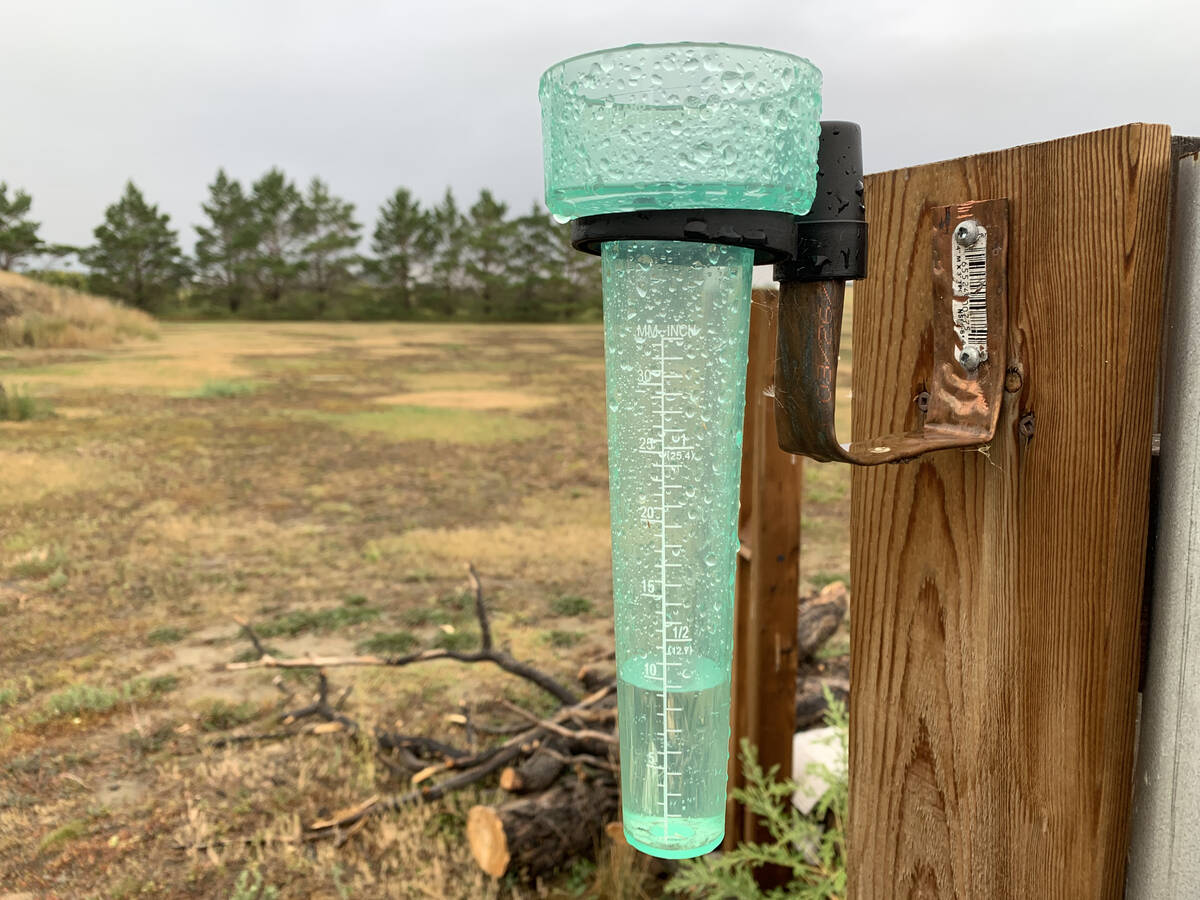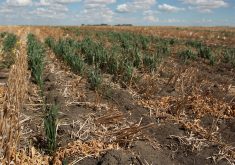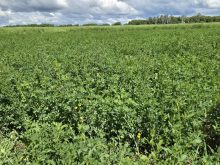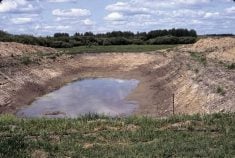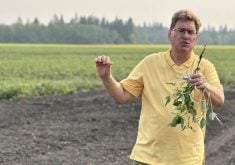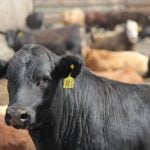Coastal British Columbia and the southeastern Prairies enjoyed a reprieve from drought conditions in September in an otherwise dry month across the country.
“We find ourselves in the unique situation where all provinces and territories assessed include extreme drought, with exceptional drought showing up in northern British Columbia, Alberta, as well as New Brunswick and Nova Scotia,” said Trevor Hadwen, agroclimate specialist for Agriculture Canada in the September Drought Monitor report.
“It is uncommon to have entire provinces or entire regions covered by drought. However, that is the case with Atlantic Canada (in September). All regions in all four provinces are classified as moderate to exceptional drought.”
Read Also
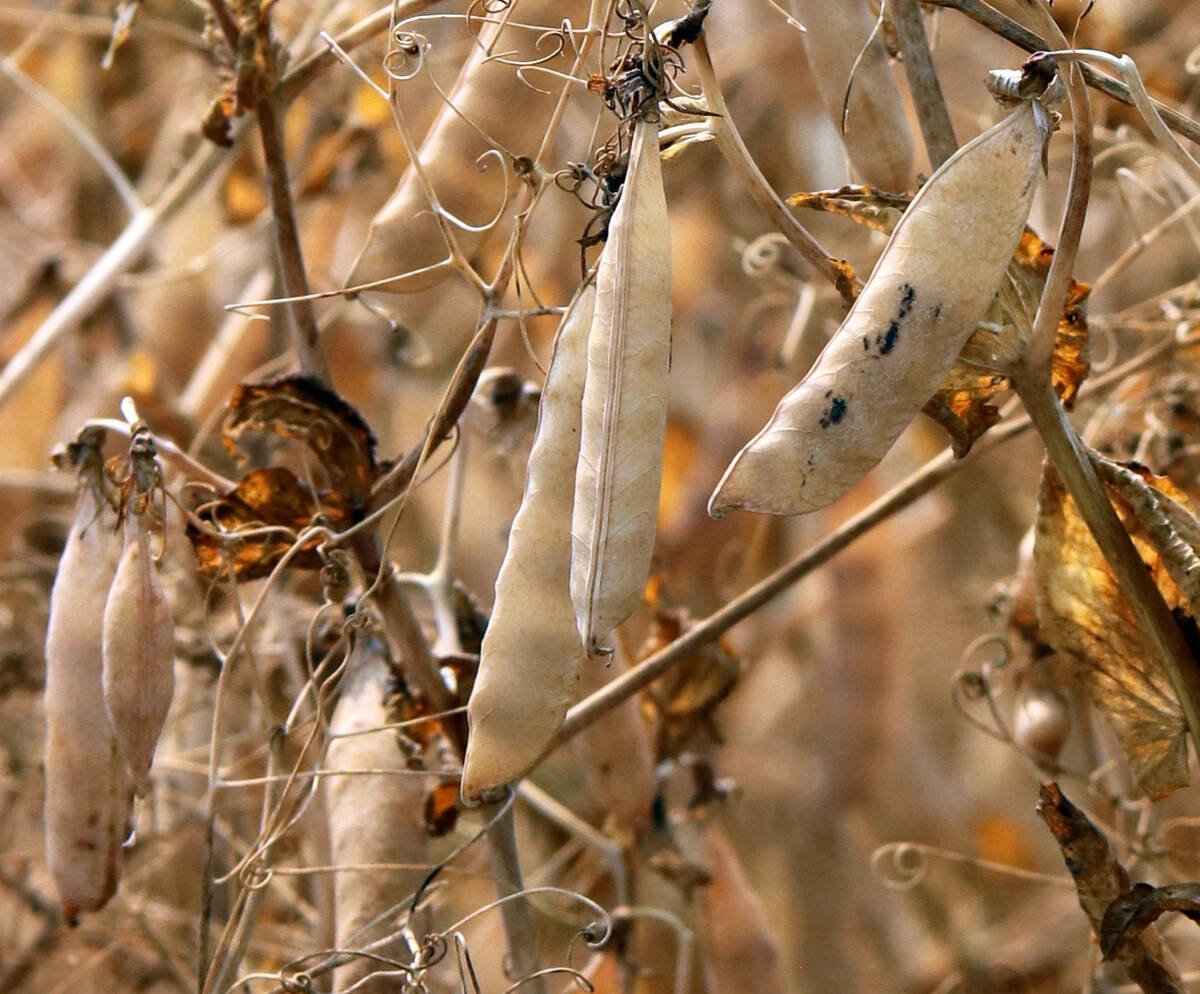
Trump’s tariffs take their toll on U.S. producers
U.S. farmers say Trump’s tariffs have been devastating for growers in that country.
Coastal B.C. received above normal precipitation through September, resulting in improved soil moisture, stream flow, surface water supplies and overall improved drought conditions.
Eastern Saskatchewan and southern Manitoba received above normal precipitation to go along with more seasonable temperatures.
The precipitation increased in a portion of southeastern Saskatchewan and parts of southwestern Manitoba, which received 200 per cent above normal precipitation for the month through localized storm activity.
“These conditions resulted in significant drought improvement as moisture, surface water supplies and stream flows returned to levels that we would normally expect for this time of year,” said Hadwen.
It marks a stark contrast form the rest of the western part of the country,where the Okanagan Valley in B.C. received only 5.9 per cent of its normal precipitation. A new extreme drought pocket emerged in the southern Thompson Okanagan region, where extremely high temperatures and well-below normal precipitation over July through September through the central region resulted in an expansion of extreme dry conditions that have led to concerns for water supplies for several regions throughout the province, including Dawson Creek.
“They’ve entered Stage Three conservation measures, and officials have warned the reservoir only contains 150 days of water supply,” said Hadwen.
Nearly all of Alberta and western Saskatchewan received less than 25 per cent of normal precipitation, with temperatures four to five degrees above normal for September. Below 10 per cent of normal monthly precipitation was recorded in Banff, Edmonton, Fort McMurray and Lloydminster.
“Although precipitation is typically low during the fall season, September represents the beginning of the moisture recharge period. Moisture during this fall period, prior to freeze-up, provides opportunity for perennial crops to begin to recover and prepare for the winter season,” said Hadwen.
With the dry conditions through August and September, southern Alberta saw the return of moderate drought conditions. Central and northern regions of the province continued to see increased drought due to warm, dry conditions.
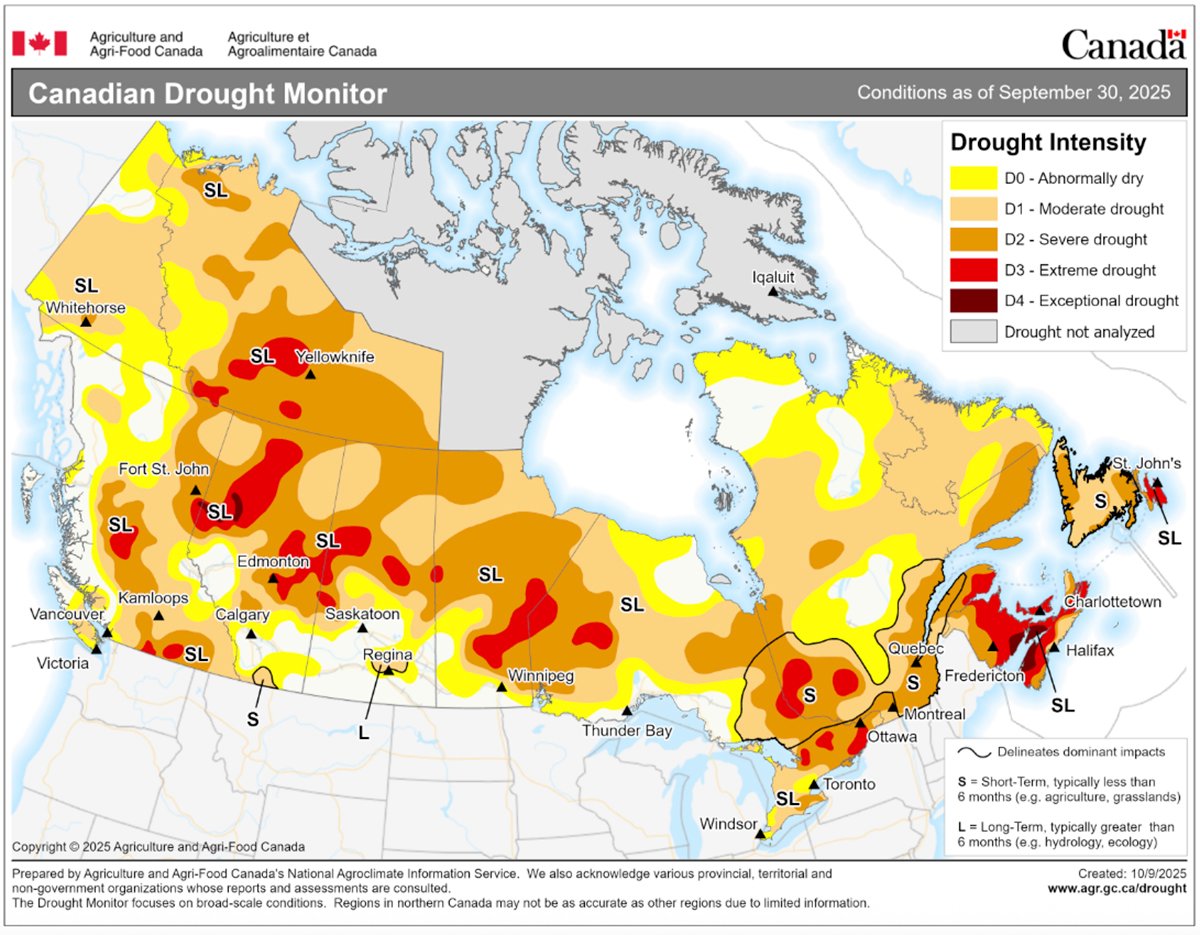
There was an expansion of severe and extreme drought through northern regions of the province, including two additional regions of exceptional drought in the Peace River District, northern.
Regions of Saskatchewan and Manitoba were more stable in September, but some regions saw worsening drought conditions.
The general warmer and drier conditions through the Prairie region helped advance harvest, but producers were hoping for significant rainfall before freeze-up to help replenish soil moisture and provide relief from the ongoing drought conditions.
Environment Canada’s long-term forecast from October through December shows a high probability of above normal temperatures in Eastern Canada with less confidence in Western Canada. There are some regions in Western Canada, including British Columbia, where the forecast is pointing to above normal precipitation.
“The general warmer and drier conditions through the Prairie region have helped advance harvest,” Hadwen said.
“However, producers are hoping for some significant rainfall before freeze up to help replenish soil moisture and provide some relief from the ongoing drought conditions.”
For information on the latest and past drought analysis, visit www.agr.gc.ca.

